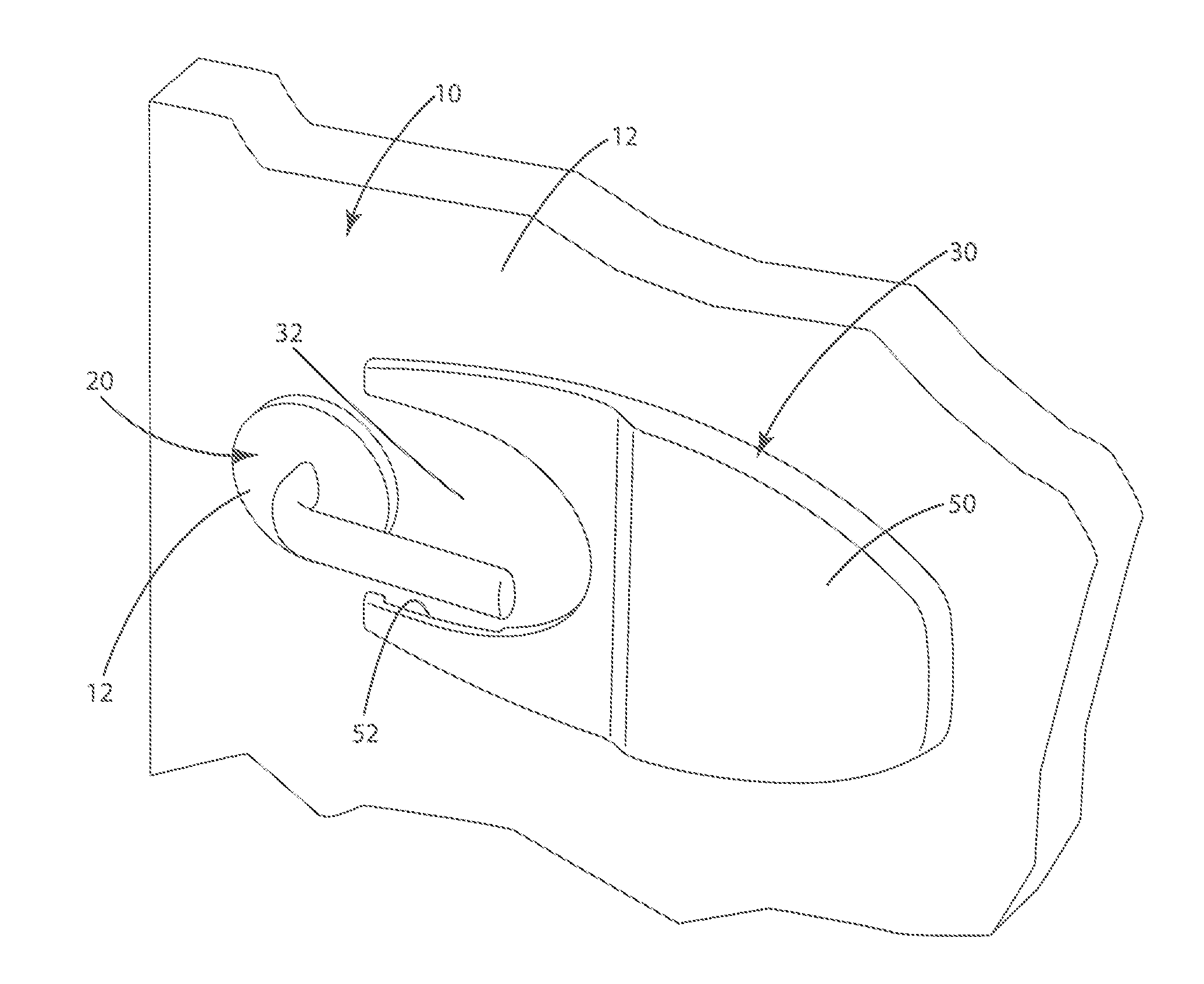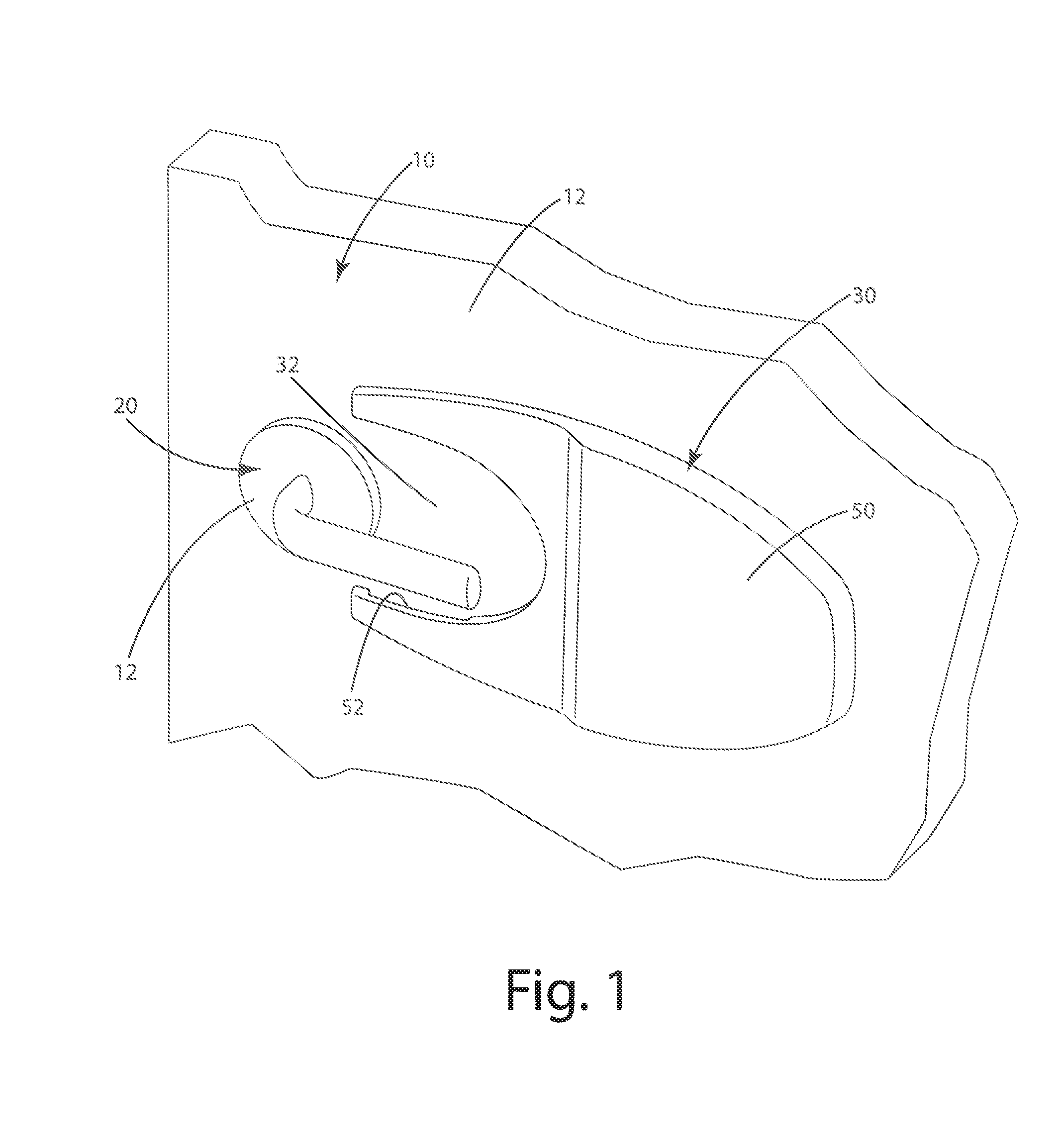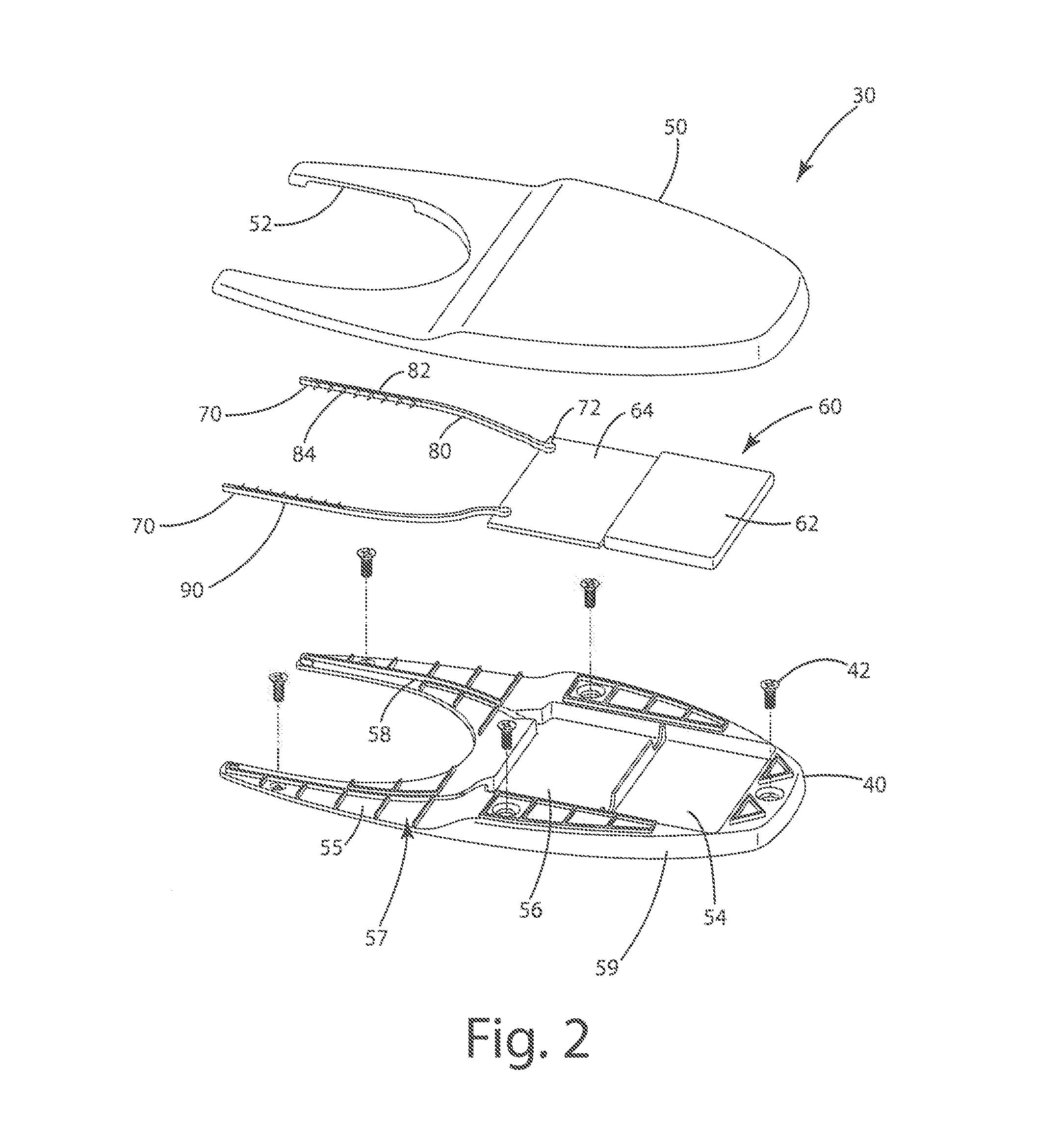Therefore, commonly touched items in public areas and facilities such as doorknobs, handles, fixtures, and other surfaces may spread such infectious diseases and pathogens.
However, contact with door handles, knobs and other fixtures related to the restroom is many times unavoidable.
However, touching many of the surfaces in a restroom after
washing hands or in a kitchen while preparing food particularly in a work place kitchen is unavoidable.
In a kitchen, other than door and fixture handles such as faucets, a refrigerator
door handle or the surface of a
microwave and light switches may all be contaminated with various pathogens.
Some people use extra paper towels to cover and touch handles of door or faucets in certain situations, however, generally this is wasteful and adds expense for the facility including increased paper cost as well as increased labor cost for replacing the paper products more frequently.
A number of prior methods have been proposed, all having limited success or significant drawbacks in sanitizing various surfaces including door handles.
The first method is generally more frequent cleaning of such surfaces, however, this increases labor costs and generally people are distrustful that the surfaces have been properly cleaned.
In addition, even if the cleaning was thorough and no pathogens exist on the surface, the very first contact by a person may place undesirable infectious agents or pathogens on the surface and any subsequent users may come in contact with such infectious agents or pathogens.
Therefore, the more frequent cleanings do not solve the problem of contaminated surfaces.
While these are generally capable of cleaning the surface, the use is limited to a person actually using them.
A big
disadvantage to these wipes, liquids or sponges is that they require frequent replacement thereby increasing the cost for the facility.
Many times these anti-bacterial sprays, liquids or wipes are empty creating an undesirable situation for the person using the facility.
In addition to the increased maintenance cost as well as product cost of replacing the battery and the chemical or wet material, generally most people find it undesirable to touch a moist or damp surface such as a moist or damp
door handle, even if the
moisture or liquid is a sanitizing chemical.
In addition, many people do not like the smell or have various chemical allergies to the chemical being used on the
door handle, making it difficult to use that facility.
While such devices prevent the spread of pathogens passed on by contact by
direct exposure to
ultraviolet light, these devices generally are power intensive and require frequent battery changes or recharging unless they are hardwired into a facility's electrical
system.
Therefore, for
doors, wherein they are controlled by a preprogrammed
timer or
motion sensing, their useful life is relatively limited requiring regular maintenance by the facility thereby raising costs.
The positioning of many of these devices is above a door
handle or counter top which places it high enough that smaller people, such as children, may inadvertently look directly at the
ultraviolet lamp which is undesirable and could cause vision issues.
Therefore, the implementation of these devices as sanitizers for various fixtures that cannot fit in an
enclosure has been limited due to their serious drawbacks.
Ozone has been highly desirable for use in
food processing plants, but has had limited other practical applications.
A sanitizing
processing system is generally of limited use because it must control the output of
ozone in a sealed environment.
Therefore, it is used in large industrial only settings and have not been successfully implemented in households or small commercial applications.
More specifically, the application of
ozone sanitizing systems has been extremely limited by the more recent understanding that ozone may cause various health issues including according to the EPA, respiratory issues such as
lung function, decrements,
inflammation and permeability, susceptibility to infection, cardiac affects and more seriously respiratory symptoms including
medication use,
asthma attacks and more.
As the concentration at which ozone effects are first observed depends mainly on the sensitivity of the individual even some parts per billion
exposure may cause noticeable issues.
Therefore, other than commercial environments where the ozone application must be specifically controlled, and these systems are not desirable for a broader implementation in homes, work places and other facilities, where the ozone is not easily contained, such as functioning as a door
handle sanitizer for an operational door.
One problem with such systems is that in applications where an external power source is not readily available, batteries for fans and other means of propulsion such as CO2 canisters must be replaced on a fairly regular basis.
In mechanisms using a fan powered by battery, the fans substantially limits the life of the battery to the point where it needs to be replaced weekly or even bi-weekly in certain environments.
In addition, any sanitizer requiring a mechanism for propelling the ions outward such as the battery-powered fans or
compressed air stop efficiently functioning, without the mechanism for propulsion.
While this circuit is simple and cost effective, it often takes long periods of time for the circuit to stabilize and reach its full output.
 Login to view more
Login to view more  Login to view more
Login to view more 


